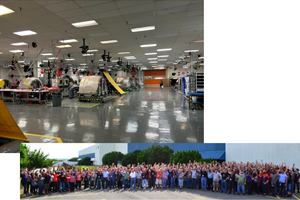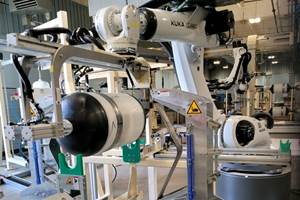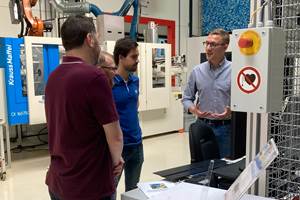CompositesWorld News for Jan. 10, 2020
Read news from Spirit AeroSystems, Eisenmann Thermal Solutions & Co. KG, and Lockheed Martin Aeronautics
Aerion Supersonic selects Potez Aéronautique as AS2 supplier
Aerostructures supplier Potez Aéronautique will design the doors of the AS2 supersonic business jet.
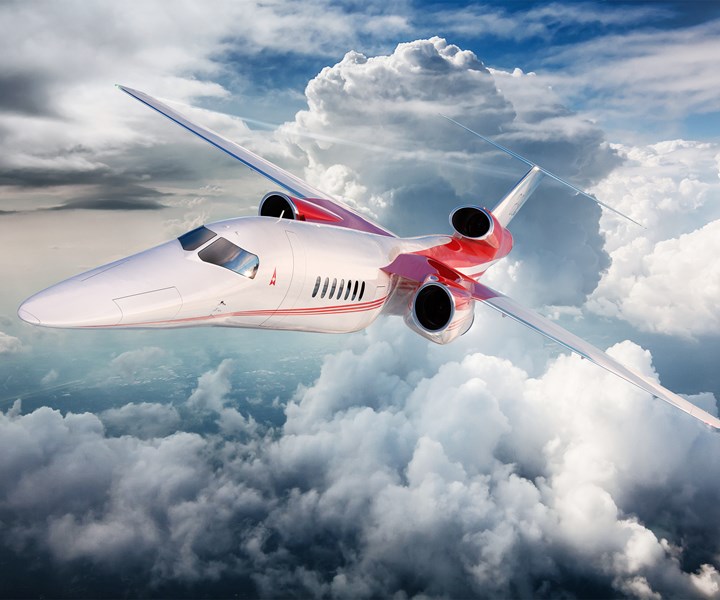
Source | Aerion Supersonic
Supersonic business jet developer Aerion Supersonic (Reno, Nev., U.S.) announced on Dec. 23 that it has selected Potez Aéronautique (Aire-sur-l’Adour, France) to design the doors of the AS2, the first privately built supersonic business jet. The 12-passenger business jet is scheduled to begin flight testing in 2024.
Potez Aéronautique is a world-class manufacturer of complex aerostructure assemblies and a specialist in design and build work packages for aircraft doors.
“Potez is an incredibly innovative company with decades of proven experience and successful program performance,” says Tom Vice, Aerion CEO. “We are excited to have Potez on the AS2 team for the design and development of the aircraft doors, including the main passenger entry door.”
“… We are very proud and enthusiastic about partnering with Aerion to contribute to the success of the ambitious and pioneering AS2,” says Roland and Antoine Potez, president and CEO of Potez Aeronautique.
Additional recently announced partners for the AS2 include Safran, designing the engine nacelles, braking system and landing gear systems; GKN Aerospace, designing and developing the empennage and electrical wiring interconnection systems; and Spirit AeroSystems, designing the pressurized fuselage.
Spirit AeroSystems initiates workforce reductions due to 737 MAX production suspension
Layoffs affecting 2,800 employees have been issued at the Wichita facility, due to ongoing production suspension and expected lower production going forward.
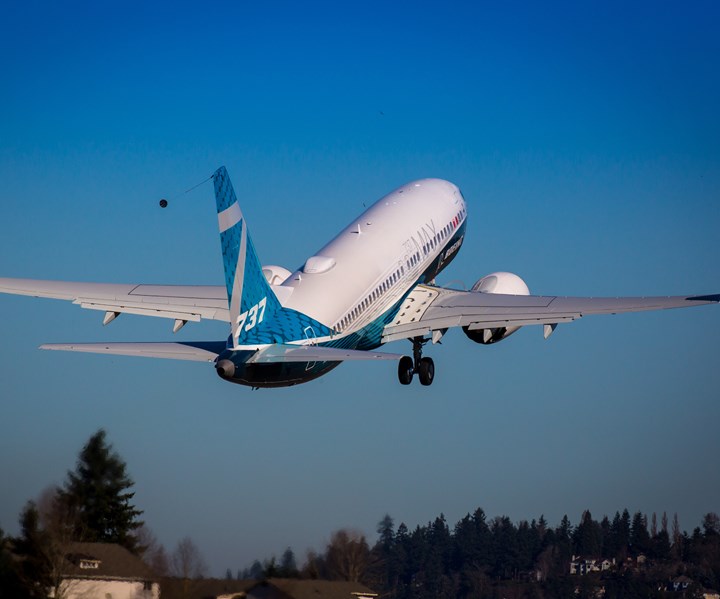
Boeing 737 MAX. Source | Boeing
On Jan. 10, Spirit AeroSystems (Wichita, Kan., U.S.) issued a notice under the Worker Adjustment and Retraining Notification Act of layoffs affecting approximately 2,800 employees at its Wichita, Kansas facility. Spirit reports that it is taking this action because of the Boeing 737 MAX production suspension, as well as ongoing uncertainty regarding the timing of when production will resume and the level of production when it does resume. Spirit says that this decision allows the company to begin aligning its cost structure to the production suspension and, after such suspension, what Spirit expects will be lower production levels than in 2019.
Spirit is a significant supplier on the 737 MAX program, with its workshare accounting for 70% of the airplane’s structure. This includes the entire fuselage, thrust reversers, engine pylons and wing components. In addition, the MAX represents more than 50% of Spirit’s annual revenue.
Spirit reports that it has not received notice from its customer, Boeing (Chicago, Ill., U.S.), on how long the production suspension will last or what the production rate will be in the future. Spirit believes that, when production resumes, the levels will be lower than previously expected, due, in part, to the customer’s need to consume more than 100 MAX shipsets currently in storage at Spirit’s facilities. In addition, Boeing has several hundred MAX airplanes built but not yet delivered to its customers.
“We continue to work with Boeing to develop a new production schedule for 2020 with an eye toward minimizing disruption, maintaining the stability of our production capabilities, and best positioning Spirit for the future.”
The company also plans to implement smaller workforce reductions later this month for its plants in Tulsa and McAlester, Oklahoma, which also produce components for the MAX. Based on final production rates agreed with Boeing, Spirit says it may have to take additional workforce actions in the future.
Employees will receive compensation for the applicable 60-day notice period, and affected employees will start exiting the company beginning Jan. 22. Th company reports that it has taken steps to lessen the impact of expected layoffs, transferring some 737 MAX employees to other programs where possible, and making plans to facilitate job fairs with other aerospace companies to help laid-off employees transition to new jobs.
“The difficult decision announced today is a necessary step given the uncertainty related to both the timing for resuming 737 MAX production and the overall production levels that can be expected following the production suspension,” says Tom Gentile, Spirit AeroSystems president and CEO. “We are taking these actions to balance the interests of all of our stakeholders as a result of the grounding of the 737 MAX, while also positioning Spirit to meet future demand.”
“Our goal is to support Boeing and a safe return to service of the MAX,” Gentile adds. “We continue to work with Boeing to develop a new production schedule for 2020 with an eye toward minimizing disruption, maintaining the stability of our production capabilities, and best positioning Spirit for the future. When production levels increase sufficiently in the future, we look forward to recalling employees impacted by today’s announcement.”
Eisenmann Thermal Solutions acquired by ONEJOON
Eisenmann, which makes furnaces used in carbon fiber manufacture, was acquired by Korea-based furnace producer ONEJOON.
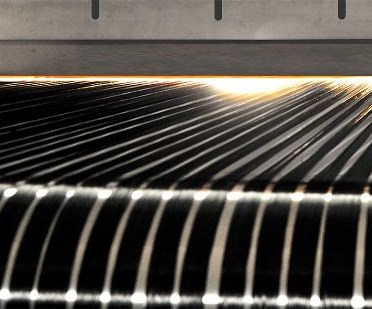
Carbon fiber manufacture in Eisenmann furnace. Source | Eisenmann
Industrial furnaces specialist Eisenmann Thermal Solutions GmbH & Co. KG (Bovenden, Germany) reported on Jan. 9 that it has been acquired by ONEJOON Co. Ltd., a Korean manufacturer of of furnaces for processing cathode and anode materials in the lithium-ion battery industry.
Eisenmann Thermal Solutions, which makes furnaces used in the manufacture of carbon fiber, was part of the Eisenmann Group, which had filed for bankruptcy in August 2019. However, Eisenmann Thermal Solutions was not considered part of the Eisenmann Group's core business, so insolvency administrator Joachim Exner, managing partner of the German law firm Dr. Beck & Partner, was forced to develop a separate investor solution for this company.
The actual purchaser of Eisenmann Thermal Solutions is ONEJOON Thermal Solutions GmbH, based in Bovenden. The transfer of business operations will take place on Jan. 15, 2020. Both of Eisenmann Thermal Solutions’ Germany sites (Böblingen and Bovenden) and all of its 200 employees will be retained.
Exner had overseen operation of Eisenmann Thermal Solutions in full since the application for insolvency. "The fact that this was successful is primarily thanks to the employees who have remained loyal to their company with full commitment over the past few months," says Exner.
Rolls-Royce targets world speed records with all-electric plane
The recently-unveiled all-electric, zero-emissions plane is part of Rolls-Royce’s strategy for accelerating electric aircraft development.
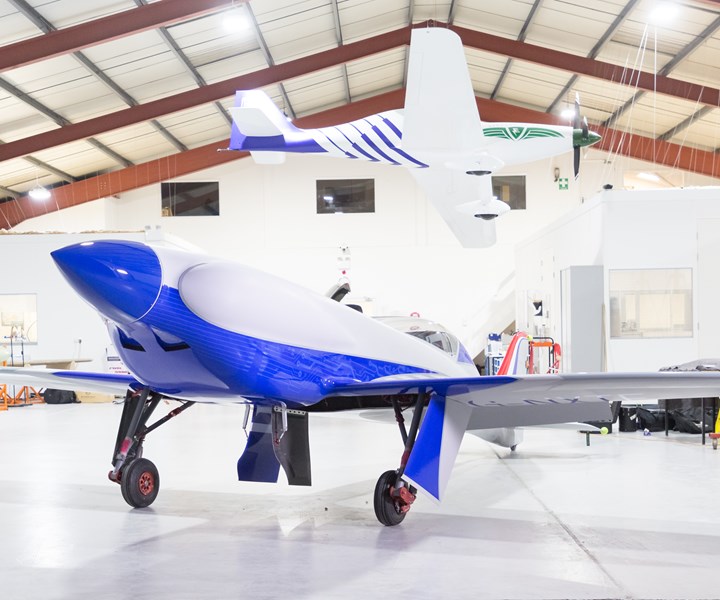
Source | Rolls-Royce
On Dec. 19, Rolls-Royce (Derby, U.K.) unveiled its all-electric plane, which the company is developing with the goal of breaking the record for world’s fastest aircraft. Work will now begin on integrating the electrical propulsion system to enable the zero-emissions plane to reach its target speed of 300+ miles per hour (480+ kilometers per hour) in late spring of this year.
The plane is part of a Rolls-Royce initiative called Accelerating the Electrification of Flight (ACCEL), and is a key part of Rolls-Royce’s strategy to promote electrification. The project involves a partners suh as electric motor and controller manufacturer YASA Ltd. (Oxford, U.K.) and the aviation start- up Electroflight (Staverton, U.K.). Half of the project’s funding is provided by the Aerospace Technology Institute (ATI; London, U.K.), in partnership with the U.K. Department for Business, Energy & Industrial Strategy and Innovate UK.
The ionBird test airframe, named after the electrical technology propelling the aircraft, was also unveiled. The ionBird will be used to test the propulsion system before it is fully integrated into the plane. Planned tests include running the propulsion system up to full power as well as key airworthiness checks.
According to Rolls-Royce, the ACCEL plane will have the most power-dense battery pack yet assembled for an aircraft, providing enough energy to fuel 250 homes or fly 200 miles on a single charge. Its 6,000 cells are packaged to minimize weight and maximize thermal protection, and its advanced cooling system is said to provide optimum performance by directly cooling cells during high-power record runs.
The propeller is driven by three high power density axial electric motors and, compared to a conventional plane, the propeller blades are said to spin at a far lower RPM to deliver a more stable and far quieter ride. Combined, they’ll continuously deliver more than 500 horsepower for the record run. Even during the record run, the all-electric powertrain is reported to power with 90% energy efficiency and zero emissions.
“This is not only an important step towards the world-record attempt but will also help to develop Rolls-Royce’s capabilities and ensure that we are at the forefront of developing technology that can play a fundamental role in enabling the transition to a low carbon global economy,” says Rob Watson, director of Rolls-Royce Electrical.
“The ATI is proud to partner with Rolls-Royce on the ACCEL programme because we believe it will lead to exciting new developments in electric propulsion. One of the priorities of the ATI is looking at how aviation can be more sustainable, and ACCEL will be a critical step in our understanding of how electric propulsion fits into that broader aspiration for the UK aerospace sector,” says Gary Elliott, CEO of the Aerospace Technology Institute. “We are also excited about the way it establishes a new and innovative supply chain, bringing together the best of the U.K. that includes cross-sector expertise, start-up energy and critical domain leadership.”
Lockheed Martin, U.S. government sign 2020 F-35 sustainment contract
The $1.9 billion contract will support operations and sustainment of the global F-35 aircraft fleet and efforts to improve mission readiness and reduce costs.

Lockheed Martin announced in December 2019 that it had delivered 134 F-35 aircraft in 2019, exceeding its annual commitment. Source | Lockheed Martin
Lockheed Martin (Fort Worth, Texas, U.S.) has announced that it has been awarded a $1.9 billion contract by the U.S.’s government’s F-35 Joint Program Office to support operations and sustainment of the global F-35 aircraft fleet, while improving mission readiness and further reducing costs.
According to Lockheed Martin, the annual contract funds critical sustainment activities for aircraft currently in the fleet and also builds enterprise capacity to support the future fleet of more than 3,000 F-35 aircraft. This reportedly includes industry sustainment experts supporting base and depot maintenance, pilot and maintainer training, and sustaining engineering across the globe. It also covers fleet-wide data analytics and supply chain management for part repair and replenishment to enhance overall supply availability for the fleet.
The F-35 Joint Program Office, together with each U.S. service, international operator and the F-35 industry team, leads F-35 sustainment and the Global Support Solution. The 2020 annualized sustainment contract will cover industry sustainment activities through Dec. 31, 2020.
Lockheed Martin reports that its sustainment cost per aircraft per year has decreased for four consecutive years, decreasing more than 35% since 2015.
The company also reports that the F-35’s reliability continues to improve, and the global fleet is averaging greater than 65% mission capable rates, with operational squadrons consistently performing near 75%.
The F-35 enterprise continues to pursue 80% mission capable rates in the near term, and to reduce the F-35 Cost Per Flight Hour to $25,000 by 2025.
To meet these goals, the enterprise is conducting supply chain competitions and building supply capacity, synchronizing spare buys, improving parts reliability and maintainability, implementing advanced analytics tools, accelerating modifications of earlier aircraft and supporting the stand-up of government-led regional warehouses and repair depots.
“The F-35 continues to deliver exceptional capabilities to the field, and this contract ensures F-35s are mission-ready to meet warfighter needs,” says Greg Ulmer, Lockheed Martin vice president and general manager of the F-35 program. “The joint government and industry team continues to make significant progress improving readiness rates and reducing sustainment costs. In 2020, we will continue to optimize and advance the sustainment system. We are confident F-35 sustainment costs will be equal to or less than legacy jets.”
Related Content
Composites UK launches best practice guide for composites tooling
“Mould Tooling for Fibre-Reinforced Polymer Composites” is latest in Composites UK’s series of good practice guides, available online for free.
Read MoreCreating a culture of excellence in aerocomposites
ST Engineering MRAS discusses the importance of addressing human factors to reduce separator inclusion in bonded structures.
Read MoreAutomated filament winding system increases throughput, reduces manual labor for pressurized well tank production
For its new line of composite well water tanks, Amtrol worked with Roth Composite Machinery on an automated process for faster, more easily tracked production.
Read MoreTPRC training courses target thermoplastic composites
Three upcoming in-person thermoplastic composites courses, ranging from entry-level to advanced, are organized to enhance composites professionals’ knowledge in this burgeoning field.
Read MoreRead Next
From the CW Archives: The tale of the thermoplastic cryotank
In 2006, guest columnist Bob Hartunian related the story of his efforts two decades prior, while at McDonnell Douglas, to develop a thermoplastic composite crytank for hydrogen storage. He learned a lot of lessons.
Read MoreComposites end markets: Energy (2024)
Composites are used widely in oil/gas, wind and other renewable energy applications. Despite market challenges, growth potential and innovation for composites continue.
Read MoreCW’s 2024 Top Shops survey offers new approach to benchmarking
Respondents that complete the survey by April 30, 2024, have the chance to be recognized as an honoree.
Read More












.jpg;maxWidth=300;quality=90)










